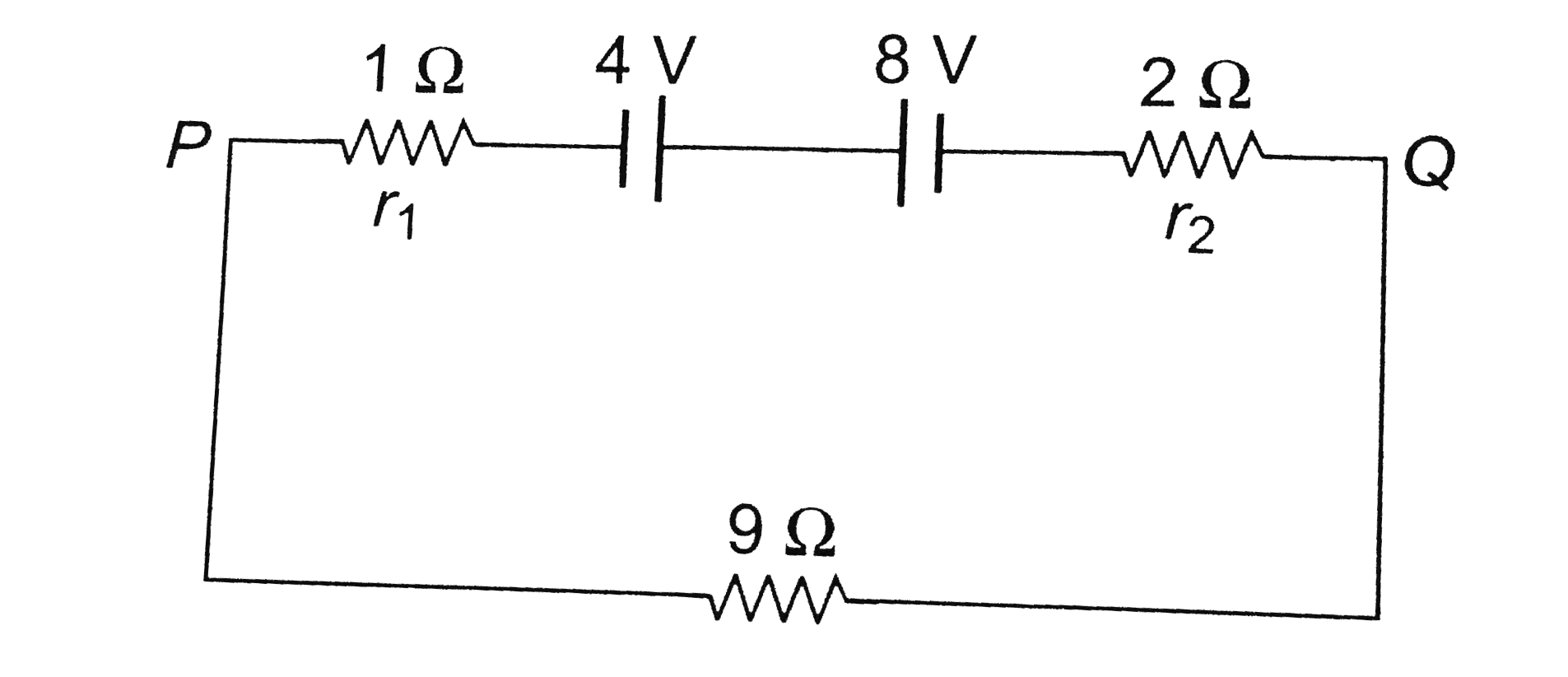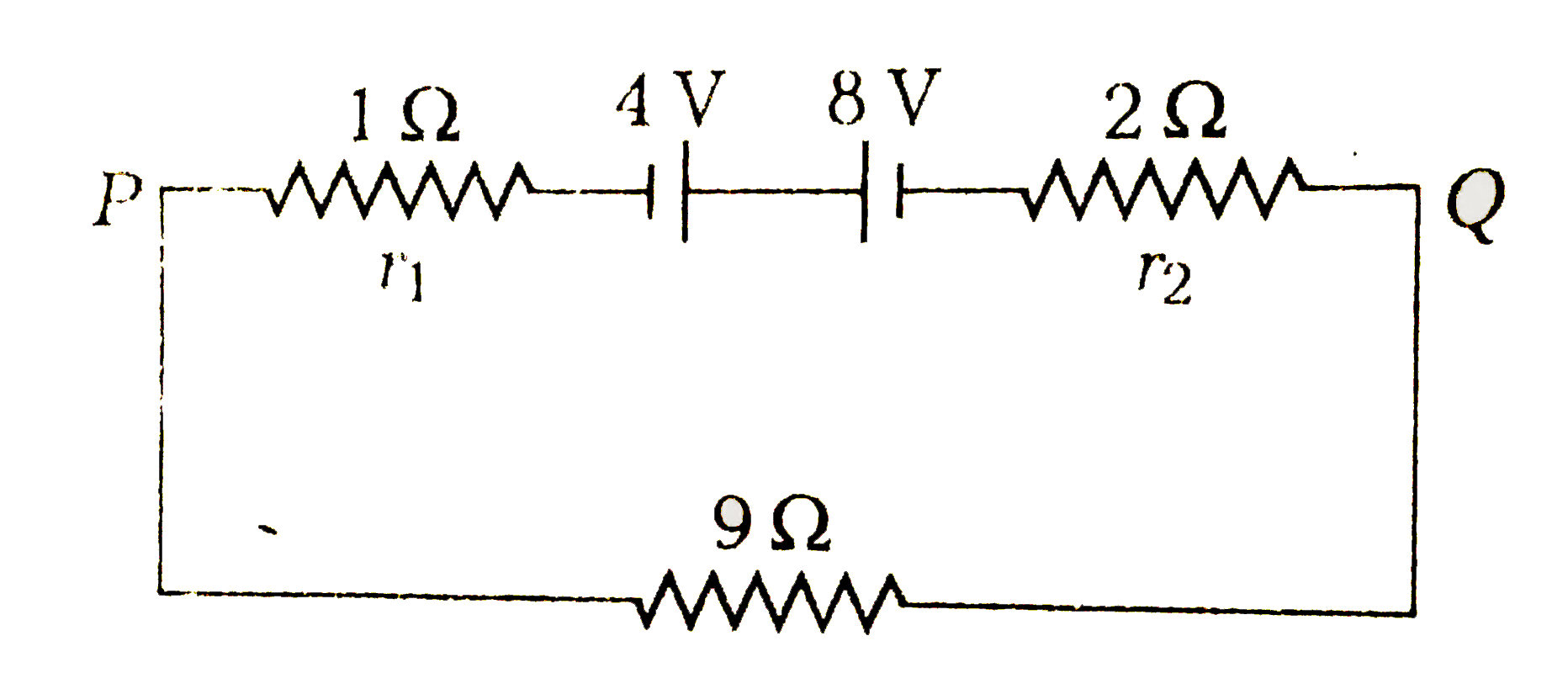A thermocouple of resistance 1.6Ω is connected in series with a galvanometer of 8Ω resistance. The thermocouple develops and e.m.f. of 10μV per degree temperature difference between two junctions. When one junction is kept at 0∘C and the other in a molten metal, the galvanometer reads 8 millivolt . The temperature of molten metal, when e.m.f. varies linearly with temperature difference, will be
960∘C
1050∘C
1275∘C
1545∘C
The correct Answer is:A
Step by step video, text & image solution for A thermocouple of resistance 1.6 Omega is connected in series with a galvanometer of 8 Omega resistance. The thermocouple develops and e.m.f. of 10 mu V per degree temperature difference between two junctions. When one junction is kept at 0^(@)C and the other in a molten metal, the galvanometer reads 8 millivolt . The temperature of molten metal, when e.m.f. varies linearly with temperature difference, will be by Physics experts to help you in doubts & scoring excellent marks in Class 12 exams.
Updated on:21/07/2023Topper's Solved these Questions
- HEATING AND CHEMICAL EFFECT OF CURRENTBook:ERRORLESS Chapter:HEATING AND CHEMICAL EFFECT OF CURRENTExercise:Heating Effect of Current
Explore 2 Videos
- HEATING AND CHEMICAL EFFECT OF CURRENTBook:ERRORLESS Chapter:HEATING AND CHEMICAL EFFECT OF CURRENTExercise:Chemical Effect Current
Explore 1 Video
- ELECTROSTATICS Book:ERRORLESS Chapter:ELECTROSTATICS Exercise:Ordinary Thinking Objective Questions (Electric Flux and Gauss.s Law)
Explore 28 Videos
- KINETIC THEORY OF GASESBook:ERRORLESS Chapter:KINETIC THEORY OF GASESExercise:QUESTIONS
Explore 126 Videos
Similar Questions
A thermocouple circuit consists of two thermal junctions and a low-resistance galvanometer , all in series. The galvanmeter has a resistance of 8Ω and the rest of the circuit has a resistance of 1.6Ω . The temperature develops an emf of 10 microvolt per degree Celsius difference of temperature between the two junction. When one junction is kept is 0∘C and the other in a molten metal, the galvanmeter reads 8 millivolt. What is the temperature of the molten metal? Assume that the emf varies linearly with the temperature difference.
View SolutionAn emf of 1 V is developed when the temperature difference between the hot and cold junctions of a thermocouple is 100 K. Assuming that the cold junction is heated by 20 K , determine the percentage change in the thermo emf.
View Solution
Knowledge Check
The temperature of the cold junction of thermo-couple is 0∘C and the temperature of hot junction is T∘C . The e.m.f . is E=16T−0.04T2μ volts. The temperature of inversion is
A200∘CB400∘CC100∘CD300∘CThe e.m.f. in a thermoelectric circuit with one junction at 0∘C and the other at t∘C is given by E=At−Bt2. The neutral temperature is then
AABB−A2BC−B2ADA2BA potentiometer wire of length 1m and resistance 10Ω is connected in series with a cell of emf 2V with internal resistance 1Ω and a resistance box including a resistance R. If potential difference between the ends of the wire is 1 mV, the value of R is
A20000ΩB19989ΩC10000ΩD9989Ω
The thermo e.m.f. E in volts of a certain thermocouple is found to vary with temperature difference q in .∘C between the two junctions according to the relation E=30θ−θ215
The neutral temperature for the thermo-couple will be:-
View SolutionThe thermo e.m.f E in volts of a certain thermocouple is found to very with temperature difference θ in ∘C between the two junctions according to the relation E=30θ−θ215 . The neutral temperatur e for the thermo - couple will be .
View SolutionTwo batteries of e.m.f. 4V and 8V with internal resistances 1Ω and 2Ω are connected in a circuit with a resistance of 9Ω as shown in figure. The current and potential difference between the points P and Q

View SolutionTwo batteries of emf 4 V and 8 V with internal resistances 1Ω and 2Ω are connected in a circuit with a resistance of 9Ω as shown in figure. The current and potential difference between the points P and Q are

View SolutionTwo different metals are joined end to end. One end is kept at constant temperature and the other end is heated to a very high temperature. The graph depicting the thermo e.m.f . is
View Solution

